Recent historic preservation efforts in Wilmington are mixed. Will these 5 sites survive?
In terms of historic structures, downtown Wilmington and the surrounding area has lost far more than has been preserved. For every Thalian Hall and Bellamy Mansion, there are hundreds of lost buildings few people have ever heard of.
Consider that at least two books, "Cape Fear Lost" by Susan Taylor Block and "Wilmington: Lost But Not Forgotten" by Beverly Tetterton, have been written about Wilmington buildings that no longer exist. Certainly, some of these lost structures needed to go away for various reasons — many were torn down during the so-called "urban renewal" of the 1960s — or were accidentally destroyed by fires or other accidents.
But one might argue that downtown and Wilmington in general have benefited as much, if not more, from historic preservation than urban renewal. The amount of charm, character and economic opportunities most of these old buildings would add to Wilmington if they were still around is incalculable.
"Besides the beaches, this is the greatest draw we have," said Joe Pawlik, a downtown Wilmington homeowner who's active in the Residents of Old Wilmington, noting that downtown was revitalized largely because of historic preservation.
"My biggest concern is that we do not have historic protections downtown," Pawlik said, adding that, in most cases, unless the N.C. State Historic Preservation Office has determined the property has statewide significance, the most that can be imposed is a one-year stay on demolition if an owner wants to tear a home or building down.
Back in the day, the Historic Wilmington Foundation (HWF) used to publish an annual list of the Wilmington area's "most threatened places," in downtown and beyond. HWF stopped doing the list in 2019, but a look back at former lists reveals a mixed track record in terms of preservation.
Some, like the St. Peter and St. Paul Russian Orthodox Church in St. Helena, near Burgaw, or the John N. Smith Cemetery in Southport, have been preserved or at least stabilized.
Other success stories from past HWF lists include the William Rand Kenan House at 110 Nun St., which, after being cited for neglect by the city and foreclosed on, is in the process of being renovated. The Fort Caswell Rifle Range near Oak Island also appears to have been protected thanks to an intervening group.
Likewise, since its inclusion on HWF's 2019 most-threatened list, the 1808 Langdon House on Orange Street has been beautifully restored; the historic Reaves Chapel in Navassa (a significant site in terms of area Black history) is nearly fully renovated thanks to the efforts of the North Carolina Coastal Land Trust; and the Alton Lennon Federal Building and Courthouse in downtown Wilmington, which has been listed in the National Register of Historic Places since 1974, has been nearly fully repaired since being heavily damaged by Hurricane Florence in 2018.
The Temple of Israel was never on the HWF list, but the historic Market Street synagogue, the oldest in North Carolina, recently completed a full renovation after incurring significant water damage from past storms.
Related coverage: 19 of the most iconic buildings and historic structures in the Wilmington area
It's not all success stories. In December, the 1926 Borst Building on North Second Street, Wilmington’s first Chrysler dealership, was torn down as part of Project Grace despite being on the National Register of Historic Places. Also as part of Project Grace, the New Hanover County Public Library's downtown branch, housed in a former Belk department store building dating to 1946, will face the wrecking ball.
The library and the Cape Fear Museum will move into a new building that's now under construction, with the former library site turned over to developers.
In 2021, Gareth Evans, executive director of the Bellamy Mansion Museum, told the StarNews that tearing down the Borst Building created something of a slippery slope.
"My biggest thing about this as a preservationist is the precedent it sets," Evans said. "If you bulldoze a National Register building … you are saying to the next developer who comes along that a municipality is happy to remove historic buildings and have it replaced by something else."
The library will follow the old WAVE Transit Center buildings on Castle Street, demolished to make room for housing, as well as the former Manor movie theater on Market Street, which dated to 1941 and in more recent years hosted the Jacob's Run, Rox, Ziggy's, Throne Theatre and Blue Eyed Muse music venues/nightclubs.
The loss of the Manor was particularly surprising to many people, in part because of how little local government or preservation groups did to stop it. The building sat vacant for nearly six years after first being declared unsafe by New Hanover County, during which time it apparently deteriorated enough that it had to be razed.
"I'm not sure it was architecturally significant. It's not like they let the Masonic Temple building fall down," Pawlik said. "But it gives other people justification to do similarly bad things. Bad behavior just begets bad behavior."
Around the Wilmington area, historic structures with uncertain futures abound. Whether they'll see new life or be lost to history like so many others remain to be seen. Here's a look at a few such structures and their future outlooks.
New Hanover County Library
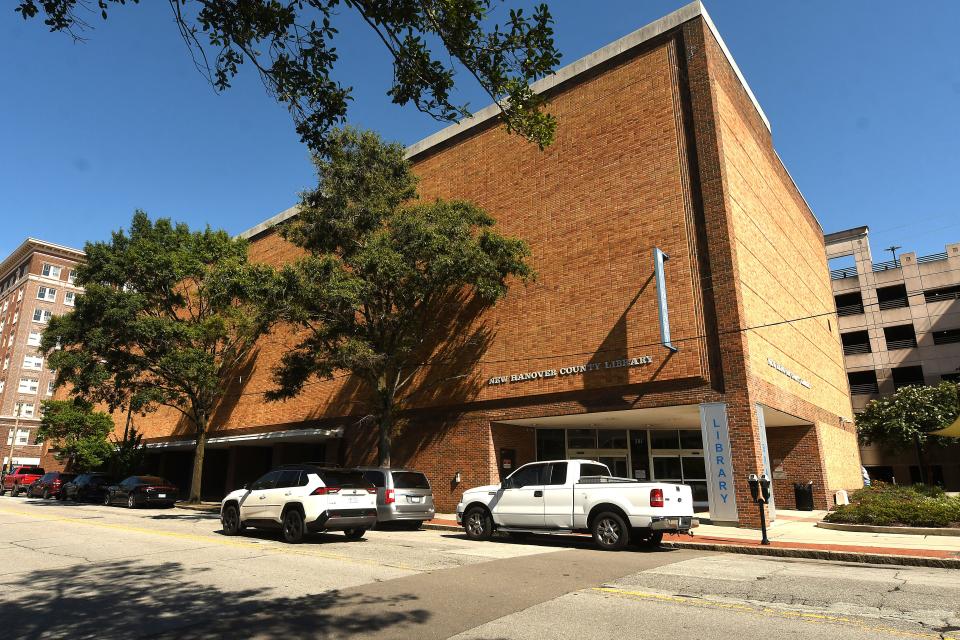
201 Chestnut St., Wilmington: As we all know, this one's a done deal. The library, which was built as a Belk department store in 1946 and has served as the main Wilmington library since 1981, will be torn down sometime in the next year as part of Project Grace.
A grassroots group called Save Our Main Library tried to stop the building, which preservationists call an exemplar of mid-century modern architecture, from being torn down but was unsuccessful.
"It was tragic. That internal space is beautiful. How many buildings have that kind of space anymore, that soaring center structure? It should've been preserved," Pawlik said.
"I'm not a fan of mid-century modern," he added, but fears other downtown buildings of a similar vintage could be the next targets of demolition by developers.
The First Bank building at Second and Market streets, for example, which was built in 1959 as Cooperative Savings and Loan, is "god-awful," Pawlik said. But "they could put that building and the water feature next to it into the Smithsonian as an example of mid-century modern architecture. It should never be torn down."
W.G. Fowler house
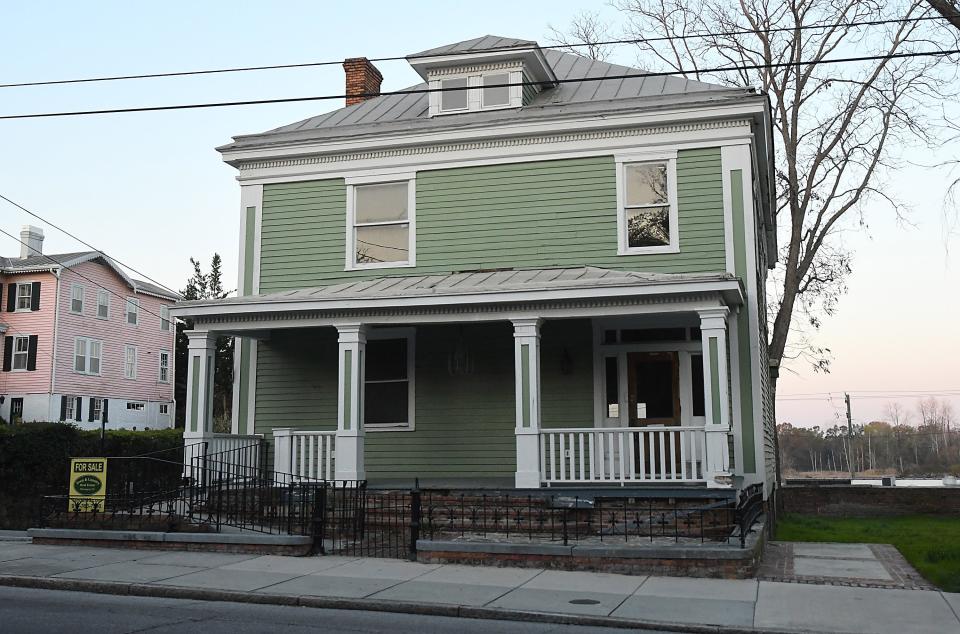
226 S. Front St., Wilmington: Known to many as the former home of the Taste of Country Southern-style buffet, which lured diners in the 1990s and early 2000s, the W.G. Fowler house is the last remaining historic structure on the 200 block of South Front Street.
A 2014 report by Wilmington's Historic District Commission, now known as the Historic Preservation Commission, says the large two-story house, which also has a basement, dates to 1865. Orginally the house had a "porch encroaching on the street," but "in 1915, the house was moved west to its current location and the interior and exterior were remodeled."
Owners in 2014 were given a one-year stay of demolition after announcing plans to tear down the building, but the house ultimately escaped the wrecking ball. At the time, the commission recommended the one-year stay because the "property is historically and architecturally significant and contributes to the historic aspects and character of the Downtown Commercial Historic District Overlay … The demolition of the subject property will result in the loss of historic character of the block, the streetscape and the Downtown Commercial Historic District Overlay (CBD-HDO) as a whole."
The house then passed into the hands of Peter Koke, who attempted some renovations, though the building was generally regarded as any eyesore even as it retained promise.
Last year, the city of Wilmington took ownership of the building and other properties owned by Koke as part of a $2.1 million settlement that put to rest ongoing issues with Koke, including litigation.
Also last year, the city hired contractors to rebuild a destroyed sidewalk on the south side of the house and to clean trash out of the building and out of a yard to the north of the house. During a Wilmington City Council meeting last year when the house was put up for sale, it was revealed that the house needs electrical work and that the attic has "temporary structural support," in addition to other issues.
A recent visit to the house revealed boarded-up windows, lots of wood rot and overgrown grass.
In October, Dave Nathans of Wilmington's Urban Building Corp LLC bought the house and adjoining lot for $600,000. It was sold by the city without any restrictions or protective covenants that would prevent its demolition.
Nathans is known for, among other things, helping to restore the former St. Andrews church on North Fourth Street into the Brooklyn Arts Center. He said the house has been "gutted" but that it's "structurally sound."
On March 1, after closing on the property in February, Nathans listed the house for sale for $700,000. The neighboring lot is not included, Nathans said, and he may develop it.
Current plans call for turning the house into seven apartments, Nathans said, with six apartments in a new structure to be built where the current vacant lot is, although a new owner of the Fowler house could conceivably put more than seven apartments in there, he said.
Nathans said he put the house on the market so soon after buying it "just to see if somebody else comes along who wants it more than I do. It's the last one of its kind" on that block.
Nathans said he's had interest, and shortly after the house went back on the market its sale was listed as "pending," although that deal apparently fell through.
The zoning on that block doesn't allow for single-family structures, something Nathans called "dumb — it doesn't make sense" and that he would like to see changed.
He said any development of that site is likely to take years.
Giblem Lodge No. 2
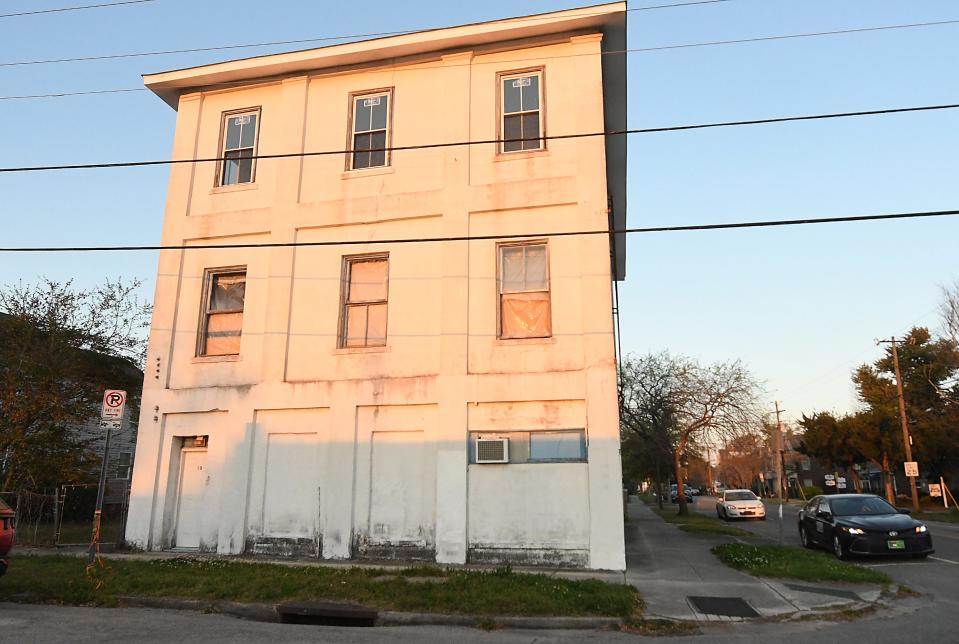
19 N. 8th St., Wilmington: Things have been moving in a generally positive direction for this historic 1871 landmark, which is the oldest Black Masonic Lodge in Wilmington and the second-oldest in the state.
After falling into substanial disrepair over the decades, although its first floor is still used by local Masons, in 2021 the Historic Wilmington Foundation announced a fundraising campaign to preserve and restore the building.
According to Travis Gilbert of the Historic Wilmington Foundation, a new roof, soffit and fascia were installed in 2023. Also last year, the Wilmington City Council named Giblem a historic local landmark, which makes its owners eligible for a 50% deferral of property taxes.
The building is an important landmark as one of Wilmington's first Black community centers, and it was the site of one of the first Wilmington libraries available to Black residents in the 1920s. It also played a role in the Wilmington coup and massacre of 1898 as the place where local Black leaders convened to form a response to white citizens who had organized a violent uprising that resulted the murders of dozens of Black people, drove many others from town, and forced a diverse coalition of progressive officeholders to resign.
Gilbert said fundraising is ongoing for the next phase of work on Giblem Lodge.
Jacob & Sarah Horowitz House
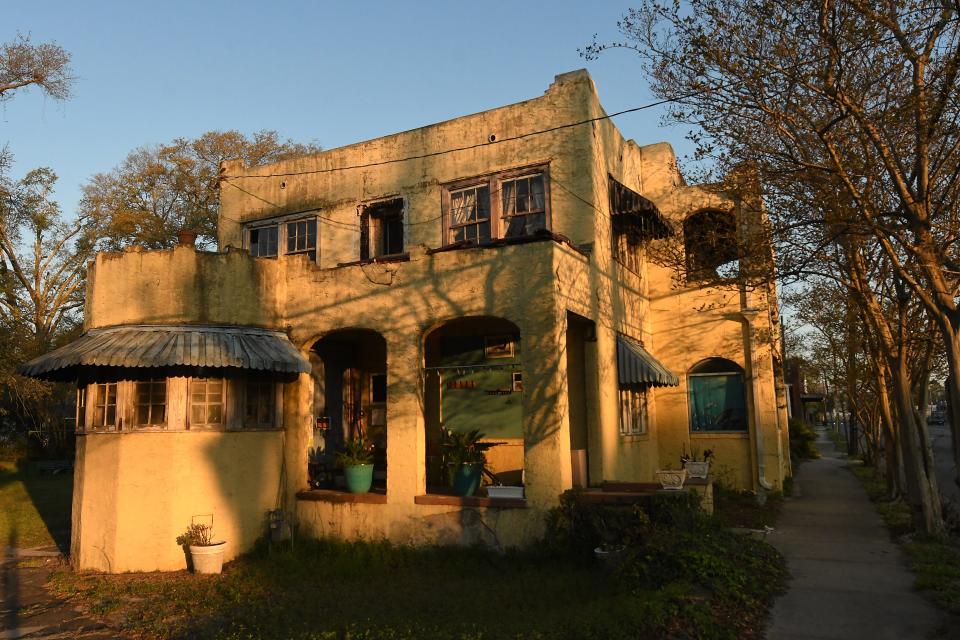
1964 Carolina Beach Road: This distinctive, 103-year-old house on Carolina Beach Road is in disrepair, and its future would appear to be in doubt unless steps are taken relatively soon.
A 2018 report by the N.C. Department of Natural and Cultural Resources said the house is eligible for inclusion on National Register of Historic Places, calling it a "rectangular, two-story, stuccoed dwelling built in the rare — for Wilmington and New Hanover County — Mission Revival style."
A recent visit revealed multiple broken or missing windows, along with water damage to the kitchen ceiling visible from the sidewalk. Dishes are stacked in the sink as if someone lives there, but no one answered the door. What appears to be a heavy overhang above a side door is somewhat alarmingly propped up with a two-by-four.
There are some well-tended plants and some new-ish pink flamingos outside, and the grass in the back is mowed, so the property doesn't appear to be completely neglected.
The house has a fascinating history, as outlined in the 2018 Department of Natural and Cultural Resources report. It was built in 1921 by Jacob and Sarah Horowitz, early members of Wilmington's B'Nai Israel Synagogue on Chestnut Street. Jacob was a Russian immigrant, and he died in the house in 1955 at the age of 66. His wife continued to live there until at least 1969.
The house was listed for sale in 2014, with the listing stating that the house was "ready for restoration with all issues exposed for inspection and repair ... Roof repair needed first." It's not clear if the roof was ever repaired, but the house is no longer listed for sale.
Property records list the home's owner as Charlotte K. Buckley of Wilmington. Interestingly, the 2018 Department of Natural and Cultural Resources report notes that Buckley first bought the house in 1996, sold it in 2005 then bought it back the following year.
Attempts to reach Buckley were unsuccessful.
Hargrove Bellamy Mansion
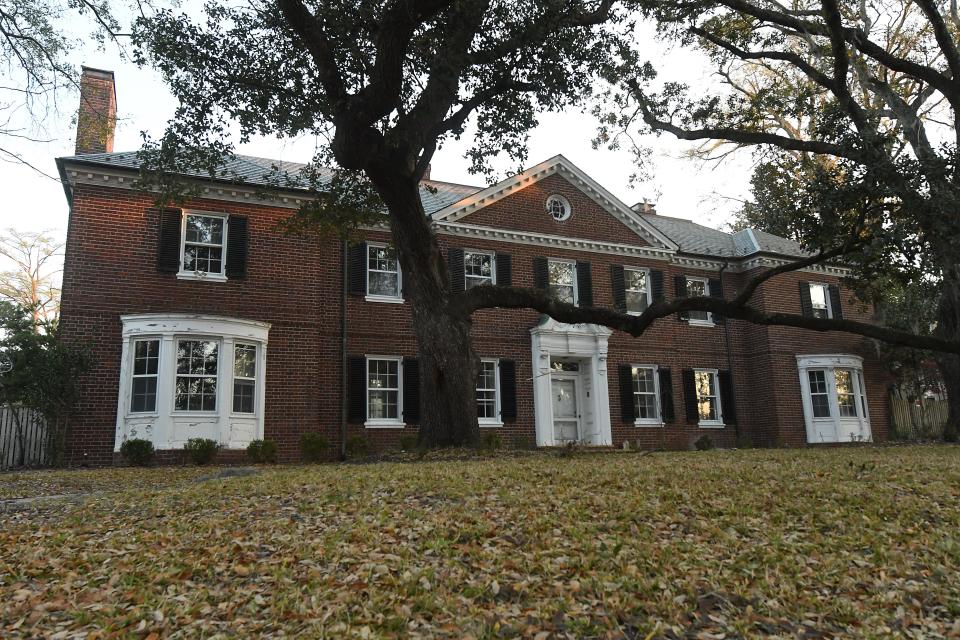
1417 Market St.: The lesser known of Wilmington's two Bellamy mansions, this large brick house on Market Street was built in 1928 for Hargrove and Sarah Bellamy, according to research done by North Carolina State University.
It's described as "a two-and-a-half story Georgian Revival structure, featuring a center pavilion with a closed pediment."
When it sold in January of 2023 for $700,000 (it's currently valued at about $1.6 million), the listing read, "This is an important part of Wilmington history that the current owner has dragged back from certain demolition."
In other words, things would seem to be going in a positive direction in terms of preservation.
A recent visit to the house revealed at least one broken window, and the house needs painting, but the slate roof appears to be in decent condition from the outside. A tall brick wall surrounds the the back yard, which appears to go all the way back to Princess Street, so it's unlear on what's going on back there.
The current owner is listed as J. Long Custom Homes LLC of Wilmington.
This article originally appeared on Wilmington StarNews: Five historic buildings in Wilmington, NC that may or may not survive

